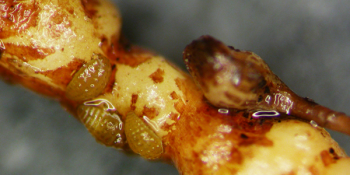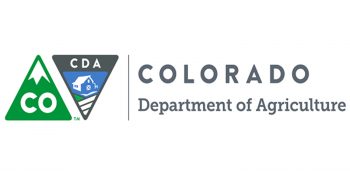Keeping Public Lands in Public Hands
Democrats on Committee Defeat Bill to Erode Federal Management of Colorado Public Lands
With a 6-3 party-line vote, the House State, Veterans & Military Affairs Committee defeated a bill this afternoon that threatened to make federal employees subject to criminal charges simply for doing their job managing public lands.
HB17-1141 would criminalize the Bureau of Land Management or Forest Service for managing grazing on land being leased by grazers. The bill would set a dangerous precedent of creating penalties for a government employee doing their job and would threaten to embolden the small subset of ranchers who sympathize with the Ammon Bundy armed seizure of a federal wildlife refuge in Oregon last year.
I cannot tell you how much respect I have for the ranchers of this state, I’m voting no on this bill because of the dangerous precedent that it sets, said Rep. Edie Hooton, D-Boulder.
Scott Braden, a public land and wilderness advocate from Mesa County described the bill as “a misguided attempt that would make it nearly impossible for federal managers to do their job. Colorado is blessed with over 23 million acres of public lands. These lands bolster our economy and our quality of life.”
I agree that our agricultural and ranching industries are important to our state and must be protected, but any perceived abuse by federal employees against ranchers won’t be resolved by this bill, said Rep. Adrienne Benavidez, D-Adams County.
Organizations opposed to the bill include Conservation Colorado, Colorado Cattlemen’s Association and the Colorado chapter of Backcountry Hunters & Anglers.
Humans Dramatically Increase Seasonal Extent of U.S. Wildfires
Humans have dramatically increased the spatial and seasonal extent of wildfires across the U.S. in recent decades and ignited more than 840,000 blazes in the spring, fall and winter seasons over a 21-year period, according to new University of Colorado Boulder-led research.
After analyzing two decades’ worth of U.S. government agency wildfire records spanning 1992-2012, the researchers found that human-ignited wildfires accounted for 84 percent of all wildfires, tripling the length of the average fire season and accounting for nearly half of the total acreage burned.
The findings were published today in the journal Proceedings of the National Academy of Sciences.
There cannot be a fire without a spark. Our results highlight the importance of considering where the ignitions that start wildfires come from, instead of focusing only on the fuel that carries fire or the weather that helps it spread. Thanks to people, the wildfire season is almost year-round, said Jennifer Balch, director of CU Boulder’s Earth Lab and an assistant professor in the Department of Geography and lead author of the new study.
The U.S. has experienced some of its largest wildfires on record over the past decade, especially in the western half of the country. The duration and intensity of future wildfire seasons is a point of national concern given the potentially severe impact on agriculture, ecosystems, recreation and other economic sectors, as well as the high cost of extinguishing blazes.
The annual cost of fighting wildfires in the U.S. has exceeded $2 billion in recent years.
The CU Boulder researchers used the U.S. Forest Service Fire Program Analysis-Fire Occurrence Database to study records of all wildfires that required a response from a state or federal agency between 1992 and 2012, omitting intentionally set prescribed burns and managed agricultural fires. Human-ignited wildfires accounted for 84 percent of 1.5 million total wildfires studied, with lightning-ignited fires accounting for the rest.
In Colorado, 30 percent of wildfires from 1992-2012 were started by people, burning over 1.2 million acres. The fire season length for human-started fires was 50 days longer than the lightning-started fire season (93 days compared to 43 days), a twofold increase.
These findings do not discount the ongoing role of climate change, but instead suggest we should be most concerned about where it overlaps with human impact,” said Balch. “Climate change is making our fields, forests and grasslands drier and hotter for longer periods, creating a greater window of opportunity for human-related ignitions to start wildfires.
While lightning-driven fires tend to be heavily concentrated in the summer months, human-ignited fires were found to be more evenly distributed across all seasons. Overall, humans added an average of 40,000 wildfires during the spring, fall and winter seasons annually — over 35 times the number of lightning-started fires in those seasons.
We saw significant increases in the numbers of large, human-started fires over time, especially in the spring. I think that’s interesting and scary because it suggests that as spring seasons get warmer and earlier due to climate change, human ignitions are putting us at increasing risk of some of the largest, most damaging wildfires, said Bethany Bradley, an associate professor at the University of Massachusetts Amherst and co-lead author of the research.
The most common day for human-started fire by far, however, was July 4, with 7,762 total wildfires started on that day over the course of the 21-year period.
“Not all fire is bad, but humans are intentionally and unintentionally adding ignitions to the landscape in areas and seasons when natural ignitions are sparse,” said John Abatzoglou, an associate professor of geography at the University of Idaho and a co-author of the paper. “We can’t easily control how dry fuels get, or lightning, but we do have some control over human started ignitions.”
The new findings have wide-ranging implications for fire management policy and suggest that human behavior can have dramatic impact on wildfire totals, for good or for ill.
“The hopeful news here is that we could, in theory, reduce human-started wildfires in the medium term,” said Balch. “But at the same time, we also need to focus on living more sustainably with fire by shifting the human contribution to ignitions to more controlled, well-managed burns.”
Co-authors of the new research include Emily Fusco of the University of Massachusetts Amherst and Adam Mahood and Chelsea Nagy of CU Boulder.
The research was funded by the NASA Terrestrial Ecology Program, the Joint Fire Sciences Program and Earth Lab through CU Boulder’s Grand Challenge Initiative.
500+ New Trees in 2017 Thanks to $35K in Grants
BROOMFIELD, CO – The Colorado Tree Coalition (CTC) is awarding nearly $35,000 in grants to eleven Colorado communities and organizations to help fund the planting of more than 500 new community trees in 2017. A diverse array of tree planting, maintenance and education projects are receiving funding. Communities receiving grants include Grand Junction, Durango, Alamosa, Aurora, South Suburban Parks & Recreation District, Monte Vista and Pueblo.
One project receiving funding this year is Durango’s Mountain Middle School’s, “Trees are the answer!” project. This project will help encourage and educate future generations on the principles of planting, nurturing and sustaining a healthy tree population. Durango’s Mountain Middle School is focused on two areas of the campus that are void of all trees.
Another organization receiving 2017 funding is the City of Pueblo Parks and Recreation Department. They will receive $2,000 for their Municipal Tree Nursery Project. The purpose of the project is to strengthen community ties and partnerships with the City of Pueblo’s Urban Forestry Program. Additionally, Pueblo Parks and Recreation will work with a local non-profit organization, Tree’s Please, in two ways. First, Tree’s Please and the City of Pueblo will create a City-Wide Tree Board. Secondly, the project will initiate a tree nursery to provide trees for future planting projects in the City of Pueblo.
While grant recipient projects vary, a few will add trees to parks, trails, schools, and downtown areas. Many will also focus on countering the threat posed by emerald ash borer (EAB), a non-native pest discovered in Boulder, CO, in 2013. EAB attacks and kills ash trees, which make up about 15% of the state’s urban trees. Grant-funded EAB projects this year will plant native and diverse trees beneath existing ash, preparing for their likely eventual decline as EAB spreads across the state.
Each year, the CTC awards thousands in grant money to Colorado communities to help preserve, renew, and enhance one of Colorado’s most valuable resources: its urban forest. Aside from aesthetic benefits, urban trees protect the air and water from pollution, save energy by shielding homes from summer sun and winter wind, increase property values, and improve the economic viability of commercial areas.
The Colorado Tree Coalition awarded nearly $50,000 to 17 organizations in 2016. Along with matching funds provided by the grant recipients this helped plant more than 360 trees in communities across Colorado. Each of these projects allowed residents the opportunity to make a difference in their community with a combined total of 3,117 hours of volunteer service. CTC grants are made possible through the support of the USDA Forest Service, the Colorado State Forest Service, Xcel Energy Foundation, Xcel Energy Vegetation Management, Colorado Public Radio and other private donors, and our Colorado Tree Coalition members and supporters. Since 1991 the Colorado Tree Coalition has awarded 501 grants totaling over $844,000. These grants have been matched with over $7.8 million in community money and/or time. As a result of these grants over 74,110 trees have been planted throughout the state.
The Colorado Tree Coalition is a volunteer-driven non-profit organization leading statewide efforts to preserve, renew and enhance community forests. Programs administered by the CTC include, among many others: Trees Across Colorado, ReForest Colorado, the Select Tree Evaluation Program, and the 5th Grade Poster Contest.
Like & Follow Us to get your daily dose of Tips, Tricks, News and Events! @I70Scout








